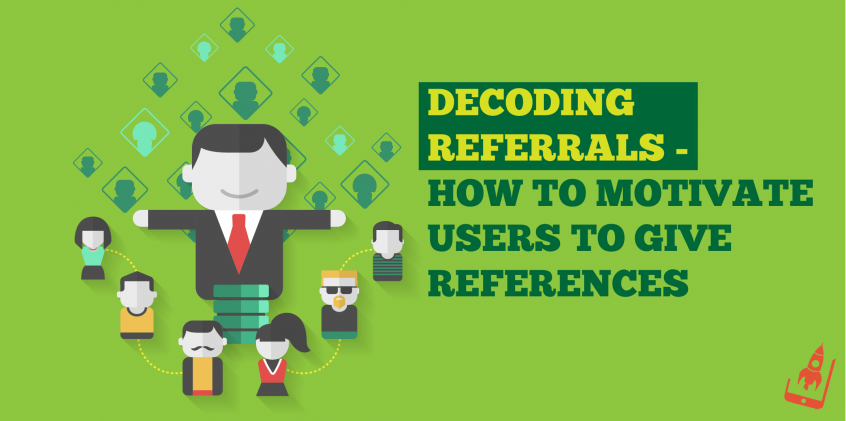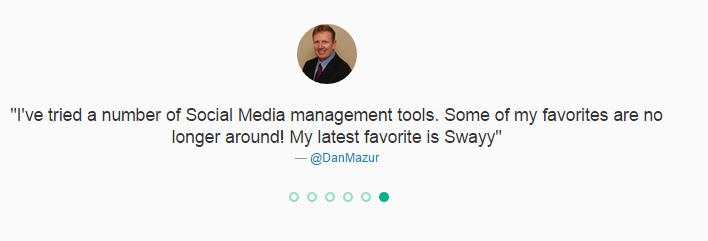Creating a notable referral campaign is one part of marketing, and resembles a linear equation from a distance.You offer the user an exciting benefit and in return they would facilitate the word-of-mouth around your product.
A lot of marketers stick to the rule book and are of an opinion that offering a great incentive is the single most important factor that drives the success of a referral program. However, if you dig deeper, you’ll understand the dynamics around this marketing tactic are quite complex to solve.
Yet many marketers don’t know the right approach to motivate their users. This post decodes the psychology behind referral marketing alongside sound advice on ways of motivating users.
What Does Emotion Have To Do With Referral Marketing?
Our brain behaves in a manner that is hard to decipher. As a marketer one may not be able to clearly pinpoint certain metrics that lead to the success of a campaign, since they may fall into the gray/debatable area. For example, metrics like brand loyalty, etc. which can be gauged, but cannot be measured as effectively as compared to the number of referrals made by a user. Clearly motivation needs to satisfy one’s ‘motive’ -needs, desire, wants et al.
There are two theories that emerge strongly when we talk about referral marketing.
Incentive Theory Of Motivation– This theory states that people are motivated to do things because of external rewards. Simple and precise, this is what makes referral marketing click. It is, therefore, the duty of a marketer to satisfy three valid concerns in the mind of the users. This includes difficulty level towards referring your product, specifying the reward and highlighting the benefits of the reward.
Why is this important? Simply because that’s what your referral campaign is judged for in the user’s mind.
Cognitive Theory Of Motivation– This theory states that expectations guide our behaviour and are based on both intrinsic and extrinsic motivation. While a user may be motivated enough to recommend a product (intrinsic motivation) he may not go ahead until the time they can foresee a reward (external motivation). Furthermore, if a user has had a favourable past experience with your referral program, they would display heightened interest in your campaign. This is another aspect of this theory.
Now that we have understood the psychology that works behind referral marketing, it’s time to decode the various ways to keep that spark alive in the mind of your users.
Build Great Product
A lot rides on your product when it comes to referrals. A user who can’t see or experience a great product will never recommend it to his friend or family. As a marketer, your aim may be to bring more users on board, but before doing so ensure that the product does not lack basic functionalities. A lot of brands try to leverage from a referral marketing, even when their product is still in the early caterpillar phase. Great brands like Buffer, launched in 2010, however, waited till 2011 to launch their referral program.
Big love to @buffer for my swag which, btw, is better than all other swag. LOVE you guys!! #Booyah #Bufferchat pic.twitter.com/fWIu6a9PXI
— Christin Kardos (@ChristinKardos) January 28, 2015
Create Captivating Rewards
The essence of any referral marketing campaign lies in its reward. The better the reward, more the chances of it being referred by its users. Depending upon the nature of your business, choose a suitable proposition that adds a value to the whole bargain. It may be a one-way incentivisation, two-way incentivation, material incentivisation or just a feature that enhances user experience. Choose the one that will compliment your users the best, and stay away from imitating your competition’s strategy.
Set Examples Of Customer Happiness
A happy customer will refer your product with gusto, and there are no two-ways about it. But how do you ensure that it actually happens? It’s important to understand that a customer will refer your product (even in the absence of a referral campaign per se) if he’s genuinely happy with your product. Here’s a good example that clarifies this thought. Alternately if you are running a campaign, keep a tab on the most vocal medium i.e., your social media channels. Ensure that your social media presence is robust, and your users are not feeling let down. Reach out to them, listen to their concerns and set a happy example. We’ve listed way too many ideas in our earlier post, which you can read here.
Highlight Testimonials
Testimonials are the best way to satisfy such users. If your product is being used by other bigger players/influencers, do make an attempt to highlight them on your website and other platforms that are visible to prospective users.
Make Referrals Easy
That’s because no one has time frankly! Our advice is to include social logins, auto fill forms and easy to use referral code to maximise the impact of your referral campaign.
Bring In The Element Of Surprise
Do you love surprises? Well, everyone does. A great way to boost your referral campaign is by surprising your users. How do you do that? To begin with sieve your referral data, and filter the influencers. Once you have this data you may want to send them branded company paraphernalia. This will enhance the effectiveness of your campaign and build trust amongst non-users.
The only hitch is that data-segmentation may take a while and may get tiresome. If you are an app developer who is banking on referral marketing, there’s some hope provided by AppVirality. Our plug and play product filters referral user data automatically into various segments which includes influencer data as well.
Another interesting way of reaching out to your users is by crafting an email campaign exclusively to have a one-on-one conversation with your user. A bit of personalisation from your end will force your users to recommend your product.
Instill Trust Within Your Users
Trust is an important element in every relationship, and that includes the one that you share with your users as well. Of course, it is challenging to maintain it when it is beyond a certain periphery and includes a huge database of users. But building trust around your product shouldn’t give you nightmares, in fact, it should be as simple as sending an E-mail. Thinking of it, a monthly newsletter to customers updating them about the growth of your product is a great way of building trust. It may take time and patience, but, would pave the way for a loyal audience in the future.
Keeping an open environment around a product may not be everyone’s cup of tea, but it does elevate a user’s trust. If your product stores credentials of a user (both personal and financial) it may require some of your policies to be upgraded to gain a customer’s trust.
Stay Accountable
A referral marketing plan exposes users to their immediate circle of friend and family. This means that these people value your referrer’s judgement and as brand/product you should stay accountable for their decision, at all times. For a product team it might be a just a simple slip, but for a referrer such instances may sour their cherished relationships.
Apologise when you are wrong and learn the art of pacifying users through humour, especially when they are talking to you on social media. With Twitter’s new feature, even DM’s can come in handy while pacifying users.
Trust us, it will increase the longevity of your product and referral campaign many folds.
Create Ambassadors Roles
How do you engage users who swear by your product? After a little while, the passion may stoop low thereby affecting your referral campaigns as well. Instead of wasting such brand loyalists create ambassadors roles for them. This will give them a sense of achievement and as a marketer you will be able to manage campaigns without added pressure on your core staff.
The above-mentioned pointers will help you to be able to incorporate the best for your product.
Which tactic would you like to upvote/recommend or refer 😉 Share your thoughts in the comments below.


